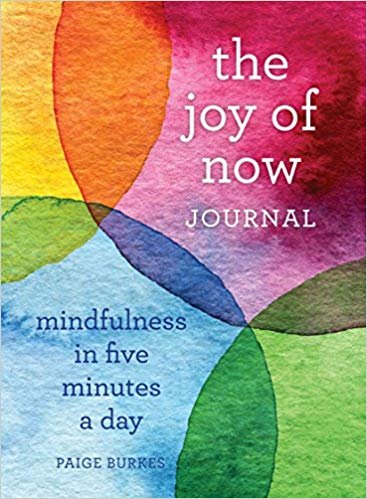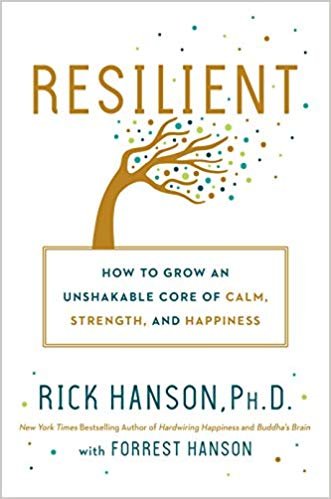Table of Contents
How to Practice Mindfulness [01:07]
MAIN IDEA
This week, we’re talking about mindfulness. In a nutshell, here’s what mindfulness is:
Mindfulness is the basic human ability to be fully present, aware of where we are and what we’re doing, and not overly reactive or overwhelmed by what’s going on around us.
Before we jump into the nitty-gritty, I want to first talk about why it’s so important, and then take a moment to clarify our understanding of mindfulness.
And one other quick thing! Just so you know, none of the products or services I recommend in this episode are sponsored. If you do click a link to buy one of the books, I’ll make a small commission. But I would recommend these products with or without those affiliate links. I fully believe in my recommendations, and use them myself!
Why mindfulness is important [02:43]
Because I’m not a mindfulness expert, I thought I’d bring in a couple of other voices for this episode.
The first is an excellent animation from happify.com which hits right at the heart of why mindfulness is so important to practice on a regular basis.
Some of the key takeaways I gleaned from this clip are:
- Mindfulness helps to bring clarity in your life
- Mindfulness also:
- Minimizes restlessness
- Settles the brain
- Helps deal with all of the emotions that arrive throughout the day
- Helps us learn to be more balanced and centered
Why mindfulness is important to me
For me, mindfulness is helping me to change my life.
By habit, I am an impatient person. I like getting things done quickly, simply, and yes easily. Hence the podcast!
But, on the flip side of that coin, I can be easily frustrated, especially by people who don’t move as quickly or efficiently as I do. Lots of folks move at a slower pace, and there’s nothing wrong with that. My impatience with them can get me into some sticky situations, though.
To deal with this, I’ve made the conscious choice to work on being more patient. And I believe that the path toward patience and kindness is mindfulness.
Clarifying mindfulness [08:47]
This week’s PRODUCT RECOMMENDATION is a service called Headspace. It’s a wonderful guided meditation app that I use on a daily basis!
I think that the animations Headspace puts out are both super cute, and help to clarify the practice in a simple, easy-to-understand way.
My key takeaways are:
- The thoughts in your mind are like traffic on a busy road
- The goal of mindfulness then is to sit on the side of the road and simply observe the traffic
- But, our habit often is to jump into the road and try to stop or follow the traffic
- With practice, we can train the mind to sit still and just observe
Learning Mindfulness [12:28]
There are a few practical tools you can use to begin cultivating mindfulness.
Mindfulness is learned
First though, it is helpful to understand that mindfulness is a skill. It’s not something that’s simply built in, something that anyone can learn to do.
From Rick Hanson’s book Resilient, which I put on my Bookshelf a couple of episodes ago:
Your brain is shaped by your experiences, which are shaped by what you attend to. With mindfulness, you can rest your attention on experience of psychological resources such as compassion and gratitude, and hardwire them into your nervous system.
In other words, you can take steps to learn to be mindful. Your brain can learn to rest naturally in a more peaceful, joyful, and content place.
For me, in the past, I felt that what my mind did was out of my control. It would wander and rest on the thoughts or emotions it felt like. But what I understand now is that that was a habit.
I, and you, have the ability to reshape that habit.
Mindfulness Exercises [16:19]
1. Meditation [16:19]
The first and most obvious mindfulness practice is to incorporate meditation into your daily life.
Meditation may sound like a far out idea, but that’s a misconception. It really is a practical, useful, modern tool that anyone can use to cultivate mindfulness.
I use Headspace to meditate daily. It’s takes you through the guided exercises in only 10 minutes a day.
If you’ve never used Headspace, I highly encourage you to sign up for their Take 10 program. It’s free, and it walks you through the basics of meditation over 10 days, for just 10 minutes a day. Simply head over to www.headspace.com to get started.
2. Journaling [22:04]
A tool I also use daily is journaling.
At first, I couldn’t wrap my head around writing long diary-like entries into a notebook each day. What I realized though was that I didn’t have to do that!
Instead, I do short entries each day. They include:
- Habit tracking
- Goal tracing
- Memories
- Gratitude: More on this below!
- Mindfulness exercise: This one is new! I use exercises from a book called The Joy of Now Journal: Mindfulness in Five Minutes a Day

3. Practicing gratitude [31:10]
It’s not joy that makes us grateful. It’s gratitude that makes us joyful.
Dr. Brene Brown, noted shame researcher, explains that people who are joyful are the folks who actively practice gratitude on a daily basis. She’s discovered that through her scientific research on shame.
I incorporate at least one thing I’m grateful for into each daily journal entry. It’s often just a single line. Something like, “I’m grateful for running water”, or “I’m grateful for coffee”.
I try to look for all kinds of things for which to be grateful. I frequently look for seemingly mundane things, too. Things like running water, electricity, my health, my washer and dryer. Things which folks often take for granted.
This practice helps to both bring a sense of mindfulness, and a little bit of joy each day.
Bonus: A technique I’m developing [37:05]
From all of my research and learning on mindfulness, I’m trying out a new technique:
- Typically, my impatient thoughts make their way out of my mouth before I can catch them
- So, now, I’m trying to give myself judgment-free space in my head to have impatient, annoyed thoughts and feelings
- I don’t encourage them, nor do I judge them. They’re simply allowed to exist.
- I find that when I give them space without judgment, they disappear almost as quickly as they arrive
- My challenge is keeping them internal, and keeping my facial expressions neutral.
Develop Resilience [40:04]
Another key step, at least for me, in developing mindfulness is also cultivating resilience. I’ve learned how to begin doing this from Rick Hanson’s Resilient.
My biggest takeaway from Resilient is Hanson’s HEAL method.
HEAL is an acronym which stands for the following:
- H: Have a positive experience
- E: Enrich that experience
- A: Absorb it
- L: Link it to negative experiences to begin healing those
These steps allow you to internalize, or learn, how to be more resilient. You develop this quality by noticing the positive things around you and consciously taking them in.
You can learn more about this book from the show notes from Episode #14: How to Read More.
Why should you care about mindfulness? [44:14]
This answer is very straightforward: Mindfulness gives you the space to be the best version of yourself you can be.
Mindfulness gives you the space to be the best version of yourself you can be.
Headspace [46:20]
PRODUCT RECOMMENDATION
As I’ve mentioned a few times, Headspace is an amazing guided meditation app that trains your brain to be mindful.
I highly recommend you try out their Take 10 program. Simply sign up at www.headspace.com to get started.
The Joy of Now Journal & Resilient [46:30]
BOOKSHELFThe Joy of Now Journal, Paige Burkes
I mentioned this journal above, but I love it so much that I’m adding it to my Bookshelf!
Book Summary
A beautiful, full-color guided journal that readers can use to help them appreciate the beauty of the present moment and “live in the now.” With insightful questions, inspiring quotations, and thoughtful meditations, this journal is a guide to mindfulness for anyone who spends too much time thinking about the past and/or worrying about the future.
Get a copy!
You can get a copy for yourself by clicking here!
Resilient, Rick Hanson, Ph.D.
I already put Resilient on my bookshelf back in Episode #14. But, it’s so relevant to this week’s topic that I wanted to remind you of it.
Book summary
These days it’s hard to count on the world outside. So, it’s vital to grow strengths inside like grit, gratitude, and compassion – the key to resilience, and to lasting well-being in a changing world.
True resilience is much more than enduring terrible conditions. We need resilience every day to raise a family, work at a job, cope with stress, deal with health problems, navigate issues with others, heal from old pain, and simply keep on going.
With his trademark blend of neuroscience, mindfulness, and positive psychology, New York Times best-selling author Dr. Rick Hanson shows you how to develop 12 vital inner strengths hardwired into your own nervous system. Then no matter what life throws at you, you’ll be able to feel less stressed, pursue opportunities with confidence, and stay calm and centered in the face of adversity.
This practical guide is full of concrete suggestions, experiential practices, personal examples, and insights into the brain. It includes effective ways to interact with others and to repair and deepen important relationships.
Warm, encouraging, and down-to-earth, Dr. Hanson’s step-by-step approach is grounded in the science of positive neuroplasticity. He explains how to overcome the brain’s negativity bias, release painful thoughts and feelings, and replace them with self-compassion, self-worth, joy, and inner peace.
Read the full Bookshelf entry
Head over to Episode #14: How to Read More to check out my full entry on Resilient.
Get a copy!
You can grab a copy for yourself by clicking here!
Updated Bookshelf!
FREEBIE
Finally, if you never want to miss an addition to my Bookshelf, sign up to grab the free, downloadable version!
Then, each time I release an update, I’ll send you an email with the new version automatically!
There will only be an addition once a month or so, so don’t worry about me blowing up your inbox!
Get the Free Download!
15 Strategies for Getting More Done in a Day
I have a fantastic freebie I'd love to send to you. It's a one-page guide that covers my favorite 15 strategies for making the most out of every day.
Click below to grab this download now!





